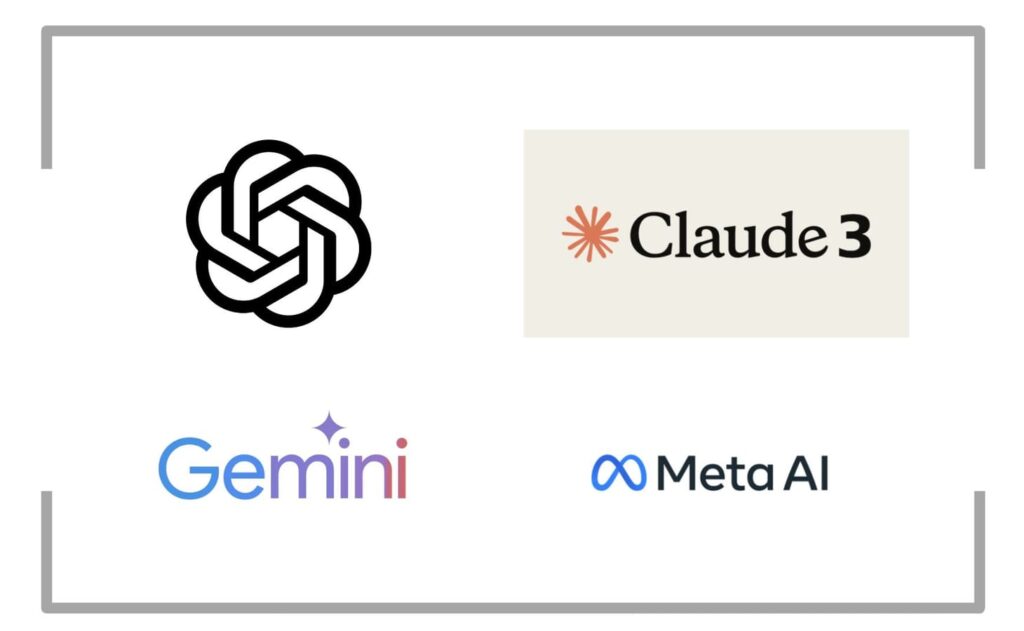As law firms navigate the rapidly evolving landscape of artificial intelligence, many attorneys are discovering that general-purpose GPT models like ChatGPT, Claude, and Gemini can serve as valuable additions to their AI toolkit. While they have limitations compared to specialized tools like LexisNexis AI and Harvey, general purpose AI like ChatGPT is often the best solution for lawyers.
Why General-Purpose AI Matters for Legal Practice
Think of general-purpose GPT models as versatile assistants who can help with everything from drafting initial documents to brainstorming research approaches. While they lack the specialized training of dedicated legal AI tools, their flexibility and accessibility make them valuable additions to a lawyer’s technological toolkit.
While these tools weren’t specifically designed for legal work, they offer unique advantages that complement specialized legal solutions. Understanding how to effectively leverage these general-purpose tools alongside specialized legal AI solutions has become crucial for modern legal practice.
Understanding the AI Landscape: General vs. Specialized Tools
Before diving into implementation strategies, it’s crucial to understand how general-purpose GPT models differ from specialized legal AI tools. This understanding shapes how we can effectively use each type of tool in legal practice and how we should craft our queries and instructions for the AI.
Specialized legal AI tools like Casetext’s CoCounsel or Harvey AI are built specifically for legal work. They draw from curated legal databases, integrate with established legal workflows, and include built-in ethical safeguards. These tools excel at specific tasks like legal research, document review, or contract analysis.
In contrast, general-purpose GPT models offer broader capabilities but require more careful oversight. They can help with a wide range of tasks, from drafting initial documents to analyzing complex scenarios, but they need proper guidance and verification to maintain professional standards.
Understanding proper ethical guidelines for AI use becomes particularly important when working with these tools.
The key difference lies in their training and design focus.
Specialized legal AI tools are built with:
- Curated legal databases and precedents
- Specific legal workflow integration
- Built-in ethical compliance features
- Legal-specific security measures
- Verified citation capabilities
In contrast, general-purpose GPT models offer:
- Broader language understanding
- Flexible application across various tasks
- More creative problem-solving capabilities
- Quick adaptation to novel situations
- Lower cost and easier accessibility
Key Insight: General-purpose GPT models should complement, not replace, specialized legal AI tools in your practice.
Comparative Strengths and Limitations
Understanding the capabilities and limitations of general-purpose GPT models helps determine their appropriate role in legal work.
Generally speaking, specialized AI tools developed specially for legal work outperform general purpose tools like ChatGPT. For example, custom legal AI tools are tailormade to deal with citations, understand legal jargon, find and parse case law and statutes, follow court specific formatting, prioritize accuracy over elegant writing, and to interface with popular legal tech software suites.
However, this does not mean general purpose tools are inappropriate for legal work. While they can’t match the specialized capabilities of purpose-built legal tools, they excel in certain areas that make them valuable additions to a lawyer’s toolkit.
Strengths of General-Purpose GPT Models
The flexibility and broad applicability of general purpose AI tools like ChatGPT can make them useful in many situations. Understanding where general-purpose GPT models excel – and where they fall short – is crucial for effective implementation.
Let’s examine the practical implications of these differences and situations where general purpose AI excels:
Initial Draft Generation
- Quick creation of first drafts for routine documents to save time and effort
- Flexible adaptation to various document types based on user specifications
- Creative problem-solving for unique situations that require innovative approaches
Research Brainstorming
- Generating initial research approaches to kickstart complex legal inquiries
- Identifying potential legal theories to guide case strategy development
- Suggesting relevant areas of investigation to uncover critical insights
Administrative Tasks
- Client communication drafts to streamline outreach and updates
- Basic legal information summaries to provide concise overviews for clients
- Routine correspondence handled efficiently to reduce administrative burdens
Implementation Strategies for General-Purpose GPT Models
Understanding how to effectively implement general-purpose GPT models requires careful consideration of their limitations compared to specialized legal tools.
Let’s examine specific workflows that maximize their utility for core legal tasks like research, analysis and writing while maintaining professional standards.
Document Generation and Analysis
Document generation represents one of the most promising applications for general-purpose GPT models in legal practice.
However, unlike specialized tools such as Contract Express or Kira Systems that integrate directly with legal workflows, these models require more structured approaches to maintain quality and accuracy. Implementing effective AI writing workflows becomes essential for maintaining professional standards.
When using general-purpose GPT models for document creation, implement these proven workflows to optimize results:
Phase 1: Pre-Generation Setup
Understanding proper setup helps ensure consistent, high-quality outputs from the outset. Before generating any content:
- Create clear prompt templates for common document types to standardize instructions
- Document specific requirements and constraints to align outputs with expectations
- Establish clear quality control checkpoints to monitor progress and catch issues early
- Prepare sample language for model guidance to provide examples of desired tone and style
Phase 2: Generation Process
The generation process itself requires careful structuring to produce accurate and usable documents:
- Break complex documents into manageable sections for focused and organized drafting
- Provide specific context and requirements for each section to ensure relevance and precision
- Include relevant jurisdiction-specific requirements to meet legal and regional standards
- Request explanations for key choices made to understand the model’s reasoning and intent
Phase 3: Post-Generation Review
Post-generation review becomes crucial for maintaining professional standards and catching potential errors:
- Cross-reference with authoritative sources to validate factual and legal accuracy
- Verify jurisdiction-specific elements to ensure compliance with local regulations
- Check for consistency and completeness throughout the document to maintain coherence
- Check for hallucinated references that may have been fabricated by the model
- Review again for consistency and completeness to confirm nothing critical was overlooked
Warning: Unlike specialized legal tools, general-purpose models require manual verification of all legal references and citations. Never assume accuracy without checking.
Research and Analysis Support
While specialized tools like Lexis+ AI or Westlaw Edge offer integrated legal research capabilities tailored to the profession, general-purpose GPT models can still provide valuable research support when used strategically to complement traditional methods.
Utilizing resources like Google’s NotebookLM to support legal research requires understanding their appropriate role in the research process to maximize their benefits.
Implement this three-phase approach for research using general-purpose models to ensure effective and reliable outcomes:
Phase 1: Initial Exploration
General-purpose models excel at helping attorneys kickstart their research efforts by:
- Generating potential research angles to uncover diverse starting points
- Identifying relevant legal concepts to focus the scope of inquiry
- Suggesting possible precedents to guide initial case exploration
- Outlining preliminary arguments to shape early strategic thinking
Phase 2: Structured Investigation
During detailed research, these models can enhance efficiency when paired with diligence:
- Use AI outputs to guide traditional legal research toward productive paths
- Cross-reference suggestions with authoritative sources to ensure accuracy
- Document verification steps to maintain a clear audit trail of the process
- Track citation sources to build a reliable foundation for legal arguments
Phase 3: Analysis Integration
For finalizing research, general-purpose models can assist in organizing and refining insights:
- Synthesize verified information into a cohesive summary for practical use
- Generate analysis frameworks to structure reasoning and conclusions
- Create argument outlines to prepare persuasive case presentations
- Identify potential counterarguments to anticipate and address opposition
Client Communication and Administrative Tasks
General-purpose GPT models excel at routine communication tasks where specialized legal tools may be unnecessary or cost-prohibitive, offering a practical solution for everyday needs. Tools like Google’s Gemini Advanced also integrate seamlessly with Google Workspace, Gmail, and Google Docs, adding a high degree of convenience for firms already using these platforms.
However, proper implementation requires clear guidelines and oversight to ensure professionalism and accuracy in client interactions.
When using general-purpose models for client communication, be sure to keep these considerations in mind to maintain quality and trust:
Establish Clear Boundaries
- Define appropriate use cases to determine when AI is suitable for communication
- Document review requirements to ensure outputs meet firm standards before sending
- Set tone and style guidelines to align AI-generated content with professional norms
- Identify prohibited topics to Avoid sensitive or inappropriate subject matter
Implement Quality Controls
- Create review checklists to systematically evaluate AI-generated communications
- Establish approval workflows to involve human oversight before final delivery
- Document modification procedures to track changes and maintain accountability
- Track communication effectiveness to assess client responses and refine approaches
Maintain Professional Standards
- Regular template updates to keep communication tools current and relevant
- Consistency checks to ensure uniformity across all client-facing materials
- Tone verification to confirm the voice reflects the firm’s values and intent
- Compliance review to verify adherence to ethical and legal communication rules
Pro Tip: Use specialized legal AI tools for sensitive or complex client matters, reserving general-purpose models for routine communications and administrative tasks.
Limitations and Risk Management
When using general-purpose GPT models in legal practice, understanding their limitations compared to specialized legal AI tools becomes crucial for risk management and implementing best practices for legal AI accuracy and quality control.
Proper risk mitigation strategies remain essential for maintaining professional standards.
Critical Limitations to Consider
General-purpose GPT models present several significant limitations that attorneys must actively manage.
Unlike specialized legal AI tools with built-in safeguards, these models require careful oversight and structured workflows to maintain professional standards.
The fundamental limitations stem from these models’ broad training rather than specialized legal focus. While tools like Harvey AI or CoCounsel are trained specifically on legal databases and precedents, general-purpose models draw from wider internet sources, leading to potential accuracy and reliability issues in legal contexts.
Understanding the specific accuracy limitations of general-purpose GPT models helps establish appropriate usage guidelines to ensure their safe and effective application in legal practice:
Accuracy and Reliability
- Tendency to generate false or incorrect citations that can mislead users if unchecked
- Outdated legal interpretation due to an inability to access current legal databases in real time
- Limited jurisdiction-specific knowledge that may overlook local laws and nuances
- Potential mixing of different legal systems, leading to confusion in multi-jurisdictional contexts
- Logical but invalid conclusions that sound plausible yet fail under legal scrutiny
Confidentiality Risks
- Lack of specialized security features tailored to the sensitive nature of legal work
- Data retention risks where client information might be stored beyond intended use
- Limited control over input processing, raising concerns about how data is handled
- Potential training data exposure that could inadvertently compromise client confidentiality
Warning: “The biggest risk isn’t that these models will make mistakes — it’s that they’ll make mistakes that look perfectly plausible,” – Ross Guberman, CEO of BriefCatch.
Ethical Considerations and Compliance
General-purpose GPT models require additional ethical safeguards compared to specialized legal AI tools.
Implementing proper ethical guidelines for using legal AI becomes particularly critical when using these broader tools.
Developing robust ethical guidelines requires understanding both technological limitations and professional obligations. Recent ABA guidance emphasizes several key areas:
Duty of Competence
- Regular training on AI tools and technologies for legal professionals.
- Assessment of AI tool capabilities and limitations
- Documentation of training sessions and participant feedback.
- Periodic evaluations of AI tools to ensure they meet legal standards.
Client Communication
- Clear explanations of how AI will be used in the legal process.
- Obtaining informed consent from clients regarding AI usage.
- Review of client communication materials for clarity and transparency.
- Records of client consent forms and feedback on AI usage.
Confidentiality Protection
- Implementation of data encryption and secure storage for client information.
- Regular audits of AI systems to ensure compliance with confidentiality standards.
- Logs of data access and modifications to ensure accountability.
- Reports from audits assessing the effectiveness of confidentiality measures.
Quality Control
- Establishing benchmarks for AI performance in legal tasks.
- Continuous monitoring of AI outputs for accuracy and relevance.
- Regular performance reviews comparing AI outputs against established benchmarks.
- Client feedback mechanisms to assess satisfaction with AI-assisted services.
Key Point: Unlike specialized legal AI tools with built-in protocols, general-purpose models require explicit documentation of usage and verification procedures to maintain ethical compliance.
Future Outlook and Adaptation Strategies
The legal industry’s approach to general-purpose AI continues to evolve rapidly.
Understanding current trends helps firms prepare for future developments while maintaining professional standards.
Emerging Trends and Considerations
Several key trends are shaping the future of general-purpose AI in legal practice, offering both opportunities and challenges for attorneys adapting to these tools:
Enhanced Capabilities
Newer model versions show improved performance, making them more viable for legal use:
- Legal reasoning abilities that better mimic human analytical processes
- Citation accuracy to reduce errors in referencing legal authorities
- Context understanding for more relevant and nuanced responses
- Specialized knowledge that narrows the gap with domain-specific tools
Integration Improvements
Developing technologies enable smoother adoption and safer use in legal workflows:
- Better workflow integration to align AI with existing firm processes
- Enhanced security features to protect sensitive client data more effectively
- Improved documentation capabilities for tracking and auditing AI outputs
- Automated verification systems to streamline accuracy checks with less effort
Risk Management Evolution
Firms are developing more sophisticated approaches to handle AI responsibly:
- Usage monitoring systems to track how AI is applied across cases
- Quality control protocols to ensure consistent and reliable outputs
- Training programs to equip staff with skills for effective AI use
- Client communication strategies to maintain transparency and trust
Preparing for Future Developments
As these tools continue to evolve, firms should focus on building flexible frameworks that can adapt to new capabilities while maintaining professional standards. {Advanced AI Technologies in Law | Understanding emerging legal AI capabilities} provides insight into future developments allowing law firms to be ready for what is to come.
Frequently Asked Questions
Q. What’s the best way to start implementing general-purpose AI tools?
A. Begin with low-risk, routine tasks where errors would be easily catchable. Document successful workflows and gradually expand use cases based on demonstrated reliability. Focus on building user confidence and establishing clear quality control protocols.
Q. How do general-purpose models complement specialized legal tools?
A. Use general-purpose models for initial drafts, research brainstorming, and routine communications, while relying on specialized tools for formal legal research, final document verification, and sensitive client matters.
Q. What training should legal professionals receive before using these tools?
A. Training should cover tool capabilities and limitations, appropriate use cases, verification requirements, confidentiality protocols, documentation standards, and ethical considerations. Regular updates help maintain proper usage standards.
Q. How can firms track and measure the impact of AI implementation?
A. Establish clear metrics for efficiency gains, error rates, user adoption, and client satisfaction. Document both successful use cases and areas needing improvement to guide future implementation strategies.
Q. How do I ensure confidentiality when using general-purpose GPT models?
A. Unlike specialized legal AI tools with built-in confidentiality protections, general-purpose models require careful handling of sensitive information.
Never input client-identifying information or confidential case details. Instead, redact or anonymize information before using these tools. Consider enterprise versions of these models, like ChatGPT Enterprise or Claude Enterprise, which offer enhanced security features and data handling protocols that align better with legal professional requirements.
Q. What’s the difference between using ChatGPT and specialized legal research tools like Lexis+ AI?
A. While ChatGPT can help brainstorm research approaches and generate initial analysis frameworks, it lacks access to current legal databases and can’t verify citations.
Specialized tools like Lexis+ AI or Westlaw Edge integrate directly with authoritative legal sources, provide verified citations, and include jurisdiction-specific analysis. Use general-purpose models for preliminary research planning and creative exploration, then verify and expand findings using specialized legal research tools.
Q. How should I document my use of general-purpose AI tools in legal work?
A. Maintain detailed records of how you use these tools, including:
- Specific tasks and purposes
- Verification methods used
- Quality control procedures implemented
- Client notifications when applicable
- Any modifications made to AI-generated content
The ABA Formal Opinion 512 emphasizes the importance of transparency and documentation in AI use.
Q. Can I use general-purpose GPT models for court filings?
A. While these models can help generate initial drafts and analysis frameworks, several jurisdictions now require disclosure of AI use in court filings.
More importantly, all AI-generated content must be thoroughly verified, especially citations and legal analysis. Some courts have sanctioned attorneys for submitting documents with AI-hallucinated citations. Always use specialized legal research tools to verify any legal references.
Q. How do I explain my use of these tools to clients?
A. Be transparent about your use of AI tools while emphasizing your oversight and quality control processes.
The ABA recommends discussing AI use with clients when it materially affects their representation. Explain how these tools help improve efficiency while maintaining professional standards through human review and verification.
Q. What training should my staff receive before using these tools?
A. Implement comprehensive training covering:
- Tool capabilities and limitations
- Appropriate use cases
- Verification requirements
- Confidentiality protocols
- Quality control procedures
- Documentation requirements
Regular updates and refresher training help maintain proper usage standards as these tools evolve.
Q. How do I integrate general-purpose GPT models with existing legal workflows?
A. Start with low-risk, routine tasks where errors would be easily catchable.
Document successful workflows and gradually expand use cases based on demonstrated reliability. Consider creating standard operating procedures that specify when to use general-purpose models versus specialized legal tools.





